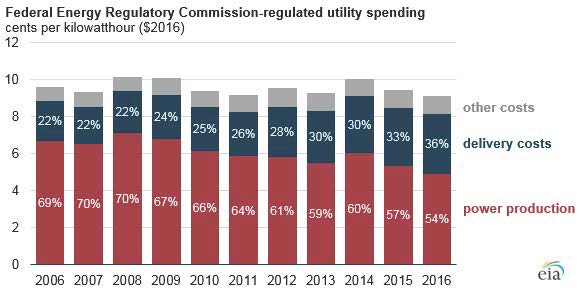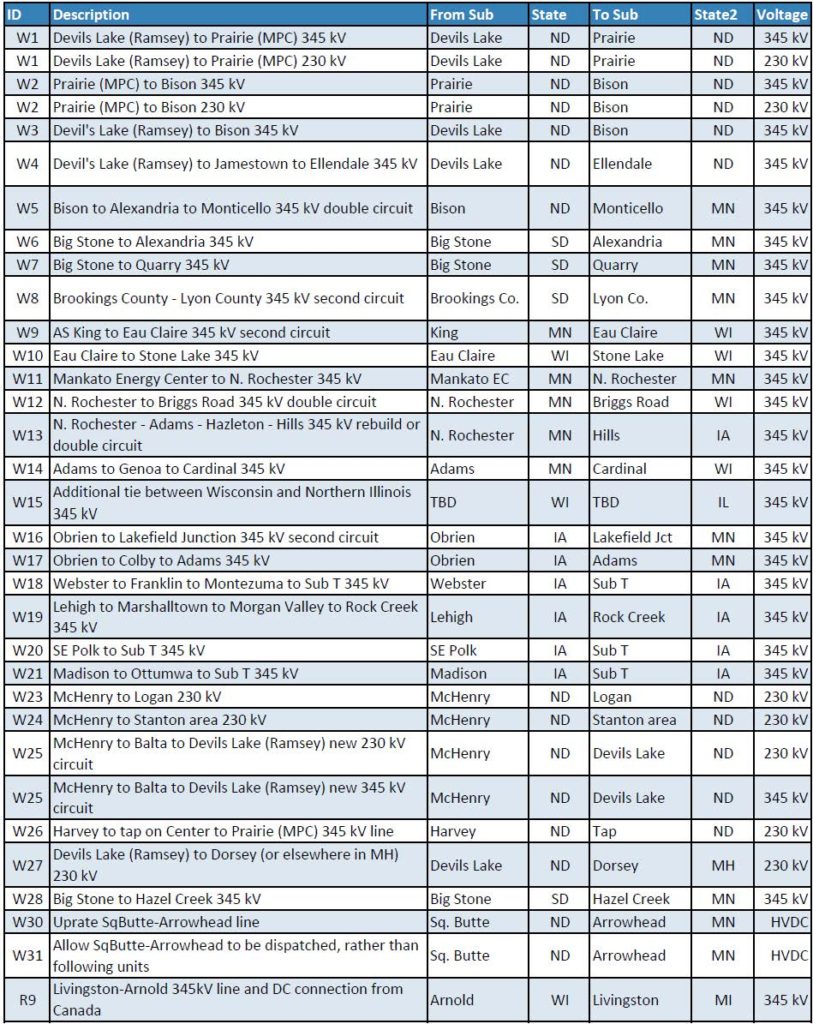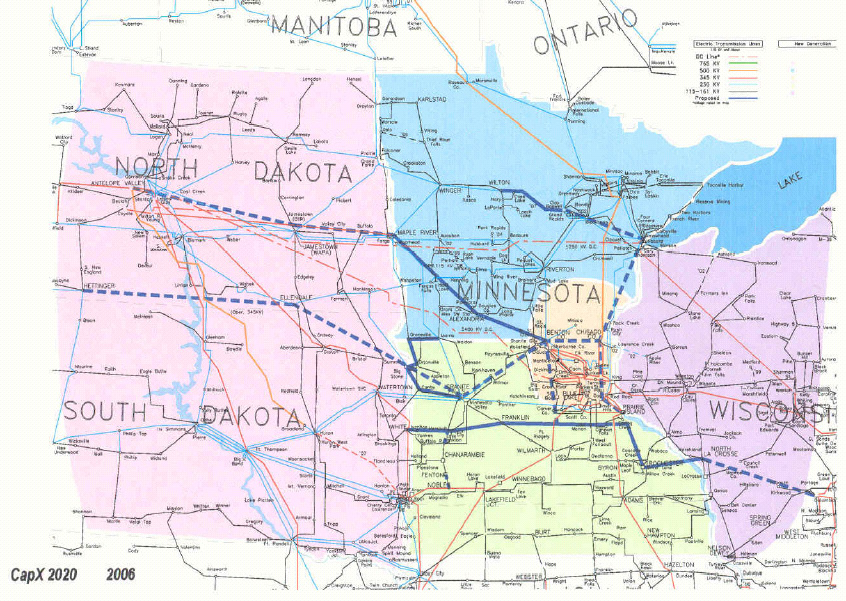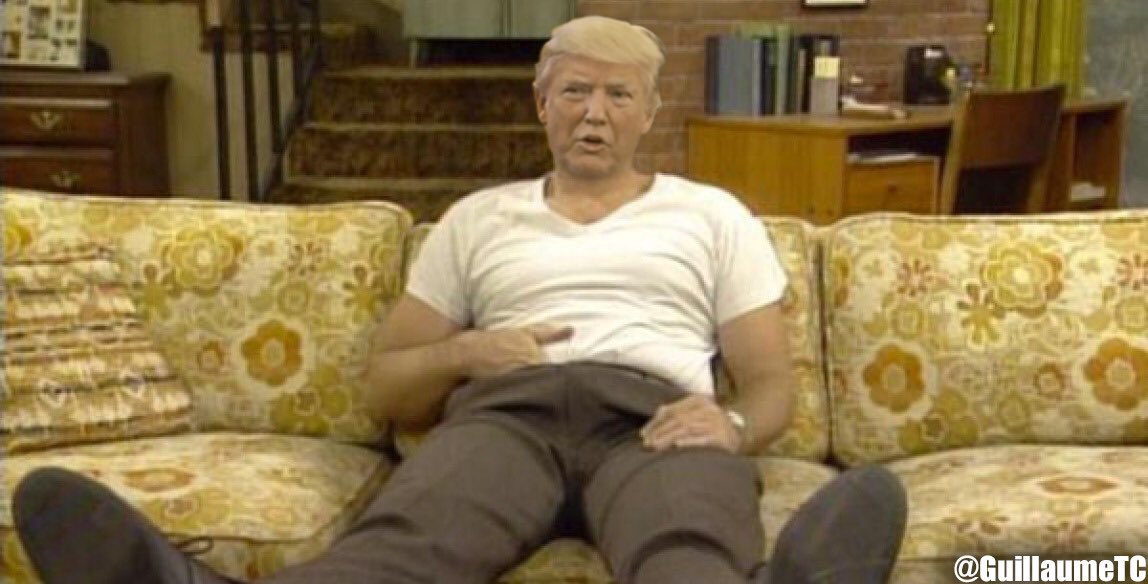Center of the American Experiment – Conflatulence!!
October 30th, 2017

These folks drive me crazy! Katherine Kersten has been on my list since the 80s when she wrote an editorial in the STrib about student loans, praising the Reagan cuts to student loans, and major decreases in income limits for “need based” student loans, just at the time I was winding up my BA and trying to get into law school. Who paid for her legal education? Anyway, yeah, obviously we don’t see eye to eye on anything, but this latest blather from them goes beyond a difference of opinion, to a too frequent spewing of conflatulence. And when I see this, yeah, I get on a rant too, it’s kind of disjointed, so I’ll be reworking soon. These claims are so insidious, because the facts do take some digging and some sifting. Add to that there is so much misinformation going on about transmission, about the Clean Power Plan… GRRRRRRRRRR…
Check this out:
Yeah, this CAE thing is going around, it’s arrived in my inbox via clients working on wind projects, it’s arrived via a transmission person from ND who put it on my facebook page via a WindAction post, which cut and pastes another “reporters” blog about the CAE “Report.” Playing “telephone” and we know how that goes… So let’s go straight to the horse’s … well, the other end.
This CAE “Report” is taking multiple things, trying to patch together an argument they want to make, but the patches aren’t holding. This comes on the heels of another report that found its way into my inbox with the claim that wind is very expensive, that it costs about 8 times the PPA cost because it’s intermittent, and because of that, they added in cost of power to cover when wind isn’t blowing (ummmm, you only pay for what you use, at the PPA price, DOH!).
Point by point in the “report” from CAE, they claim:
Minnesota has lost its advantage on electricity
That’s true! But sorry, CAE, it’s not because of wind. Rates have gone sky high in Minnesota for a couple of reasons. 1) Wholesale deregulation allowing sales from any Point A to any Point B, and 2) Transmission for coal and whatever else, from every Point A to every Point B. It is NOT 3) Wind is higher priced, because it is not.
Reason one that are rates are as high as Illinois rates? The economics of deregulation aren’t rocket science. When you have something to sell, you sell to the highest bidder. If someone else wants it, then they have to pay the going rate. A good resource on how we got to where we are is “The Economics of Regulation: Principles and Institutions,” by Alfred E. Kahn. It’s a major tome, but hey, just read Chapter 2, the chapter on electricity, “The Traditional Issues in the Pricing of Public Utility Services. Then, go back and read the introduction, where it gets into building more capacity than is needed, and the burden on ratepayers when utilities go overboard, particularly relevant when we get to the next point, that of overbuilding, and also consider the 105+ coal plants proposed but not built, including many coal gasification plants (i.e., Excelsior Energy’s Mesaba Project here in Minnesota and the NRG plant in Delaware, both of which I helped tank. The Mesaba Project provided much needed details about the technical problems and economics of coal gasification and the impossibility of carbon capture and storage that doomed any project from the get-go. IGCC – Pipedreams of Green & Clean), and the economic and technological disasters of the new Vogtle and V.C. Summer nuclear plants, and two coal gasification plants in Edwardsport , Indiana (coal gasification off more than on, often down completely) and Kemper IGCC in Mississippi (over $7 billion and now burning natural gas) that got off the drawing board but are economic disasters with ratepayers holding the bag.
Take a look at the cost of electricity, in real time:
FYI, here’s some wallpaper for ya, with the MISO Market LMP price in real time (keep in mind, this is spot market, so prices higher than PPA prices):
https://www.misoenergy.org/MarketsOperations/RealTimeMarketData/Pages/LMPContourMap.aspx
Check this slide from FERC info on EIA page:

What? Delivery costs? Oh, TRANSMISSION!! (full story from EIA HERE)
Note also, from the same EIA post, the shift away from Power Purchase Agreements that came with the decrease in demand electricity glut:

Now, let’s move on to 2) Transmission for coal and whatever else may happen to be there, from every Point A to every Point B.
When you’re thinking about this, and about all the whining about shutting down coal plants, remember that the older very high priced to operate coal plants are being shut down. What about other plants? If all, if the majority, of coal plants were shut down, what would that mean for the transmission system? This is important — if those plants were shut down, there would be lots of room on the transmission system. But they didn’t. Instead, they built this huge transmission overlay called CapX 2020, at a cost of over $2 BILLION, and are now building the MISO 17 project MVP Portfolio (see MVP Dashboard — now up to $6.6 BILLION). MISO is now talking about a Regional Transmission Overlay above those (click on the maps in the link, AAACK!). Check the 20170131 EPUG Preliminary Overlay Ideas List. Get your pocketbook ready to pay for this. And for your nightmares, piece by piece:

In the process of getting from any Point A to any Point B, we’ve overbuilt transmission to the point that Xcel Energy is whining that the grid is only 55% utilized.
(N) Identify and develop opportunities to reduce customer costs by improving overall grid efficiency. In Minnesota, the total electric system utilization is approximately 55 percent (average demand divided by peak demand), thus providing an opportunity to reduce system costs by better utilizing existing system assets (e.g., generation, wires, etc.). (e21_Initiative_Phase_I_Report, p. 11).
OK, let’s look at “any Point A to any Point B.” Where does this CapX 2020 that started the big transmission build-out start and where does it end (keeping in mind it began with WIREs and WRAO released in 1998, they’ve built almost all of those proposed then)?

Well, fancy that. It starts in the coal fields of the Dakotas, at the major coal plants fueled by the neighboring coal mines. Oh, and look, it goes east to the Madison ring and off to Illinois… huh… funny how that works… Now, think about what it means for “pass through” Minnesota!
How about the MISO 17 project MVP Portfolio, again, now priced at over $6.6 BILLION (it was $5.24 billion when approved by MISO):

And the addition of the capital costs of these projects to the rates has not been adequately considered. Xcel admits in its latest rate case initial filing (15-826), now water over the dam, that it’s transmission driven. In the CapX 2020 cases that No CapX 2020 intervened in, the Certificate of Need and multiple routing dockets, we were not able to raise rate issues, consistently and adamantly told that no, that can only be addressed in rate cases. Was Center of the American Experiment there? Nope. They were just agitating to get people to comment, but no substance. Maybe if they’d read the rate case dockets, they’d have some credibility, but nooooooo.
Look at PUC Rate Case Docket 15-826, and the one before it, 13-868. What is driving Minnesota’s price is not wind (it’s much lower PPA price than any other resource) but transmission. We’re now paying for CapX 2020 transmission and the MISO MVP 17 project portolio (an apportioned share). Transmission ROI is 12.38%, though it’s in a fight at FERC which will lower it to maybe 9+%, which is much more than they get on electricity because price is so low. We are also now paying for rebuilding the Sherco 3 coal plant which was down for two years after the turbine went wild and blew up, and that rehab was over budget (2 years that power wasn’t needed, but rebuilt it anyway and we’re paying!). And the Monticello nuclear plant rehab and uprate which cost twice as much as they thought (and so because of too high cost and lack of need, they started but then cancelled the same at Prairie Island here in Red Wing). (the electric market is so bad, prices so low, that Xcel is wrangling to have its “business plan” determine rates, not cost! And they want to focus on building things to get that ROI which is a lot higher.) Center of the American Experiment is not a credible source, they do this sort of thing all the time to advance their agenda, and don’t dig into the facts. WindAction latches on to this, without looking for details, facts. That comes out in the rate case.
I tried, both individually and on behalf of No CapX 2020 to intervene in the most recent rate case (15-826) because CapX and MISO MVP transmission is the driver, and got into quite a testy fight with the ALJ, Judge Oxley. He was so extreme in his resistance, worked so hard to exclude No CapX, beyond anything I’ve ever seen before. When I presented at the public hearing, he refused to allow cross examination of the witnesses, said he wouldn’t require their witnesses to be present at the hearing, and started yelling at me, all on the record, and it looked like he was about to start crying, eyes red and watery, shaking visibly. It was so bizarre. Details here – particularly the Denial #2_Overland-NoCapX Intervention where he declared NO, NO intervention in a very pissy way, and despite this being the rate case, and throughout the CapX 2020 dockets (all 5 of them over 8 years!) and ITC’s MISO MVP Line 3, where we were repeatedly prohibited from addressing rate impacts, nope, no intervention in the rate case:
Encourage public participation? Yeah, right…
February 10th, 2016
Public participation? Tough in Xcel rate case
July 14th, 2016
And here’s an interesting tidbit exposing Xcel’s failure to pay taxes, in essence a public subsidy of Xcel:
Xcel Energy Rate Case — taxes & xmsn rider
June 27th, 2016
From my NoCapX2020 site:
Xcel Rate Case in CapX territory
Well, look who’s intervened in the rate case!
Also, note how CAE goes into a spiel about wind “subsidies” but they don’t address that ALL forms of generation are subsidized, with nuclear getting the most expensive of all, coal second (and shall we get into subsidies for failed IGCC/coal gasification? OH MY DOG!). I have no time for these “subsidy” arguments when there’s no charge to remove ALL subsidies for energy across the board. They also talks about wind needing coal as “backstop.” Ummm, no, that’s natural gas. Coal can’t ramp up and shut down quickly. Natural gas can and does. Shame, they should know better… Coal as “backstop.” Good grief. And on top of that, they try to argue that the cost of backup power for intermittent should be considered as part of the cost of intermittent? Oh, right… tell that to the natural gas plant operators, tell that to those negotiating PPAs for intermittent power! What a hoot! FYI, no, it doesn’t work that way.
And here’s a simple way to clairfy — think about what it would mean if they shut down the coal plants, as we keep hearing about… would we need ANY new transmission? And think about what we’re paying in our utility bills to shuffle this power eastward. Which we’ll get back to further down, and now, on to the next point:
Minnesota’s energy policy primarily promotes wind power.
Yeah, that’s true, wind and solar. For years wind has been a “least cost” option, as declared by the Dept. of Commerce and the Public Utilities Commission, as they do the Integrated Resource Planning and review of Power Purchase Agreements. But don’t forget when talking about energy policy, the massive promotion and subsidization of coal gasification, which even with all the push, couldn’t make it. It was tossed out of the PUC based on the outrageous costs, despite the state subsidies from several sources, and federal bankrolling, grants, and subsidies (for more info, search here for “Mesaba” and “IRRB,” “Mesaba” and “DOE” and just “Mesaba” and scroll through. There’s a lot, that was a 5+ year fight.).
CAE states that there will be only “modest increases in solar,” and that’s way off, both for commercial and residential. Watch! FULL DISCLOSURE: My father designed the solar at the Minnesota Zoo (which was hot water, they didn’t know much about that in early-mid ’70s and produced way too much, was taken down, and the pieces parted out across Minnesota — Ralph Jacobson, IPS knows more about that.). Solar is best because it produces on peak, is storable, particularly at a residential level, and it’s right where load is. Why isn’t every big box in Minnesota covered with solar?
Minnesota has also policy-wise, or unwise, pushed biomass, which has been an economic disaster and Xcel Energy has cut the “biomass mandate,” and is trying to get out of the PPAs for biomass plants that they don’t own, and working to slash the price at the HERC garbage incinerator. Biomass, high priced as it is, however, is a very small percentage of total generation.
Minnesota energy policy also focuses on conservation and efficiency. Conservation is by far the cheapest, because if you don’t use it, it doesn’t cost a thing!
And look at Xcel Energy demand over the years:
It’s Xcel Energy’s, and the utility industry world’s, “new normal,” as Xcel’s CEO Ben Fowkes calls it. Here’s their 2017 3Q powerpoint that came out with their 3Q investors call: CLICK HERE! New capital investment of $1.5 billion and “Targeted ownership” = “Steel for Fuel” plan, making money off capital costs, and significant decrease in fuel costs. Base capital plan of $19 billion = ~5.5% rate base growth — that’s the point! Making money in a way that’s not dependent on selling electricity. And slide 10, Minnesota’s 0.5% DECREASE in sales, overall Xcel 0.2% growth. The “new normal.”

Minnesota’s energy policy is falling on its own terms, as it has not achieved a significant reduction in CO2 emissions.
True, but… This is an area of conflatulence. State policy promoting wind DOES NOT EQUAL reduction of CO2 — it only equals building wind. Building billions of MW of wind will not decrease CO2 emissions. Closing coal plants will. Stopping burning will. That’s the only way.
Minnesota has not closed all, or even most, its coal plant generation. We have only closed some of the older coal plants that are not economical to run. Look at Sherco 3, a plant that had a major turbine failure and fire and was off line for nearly two years and was rehabbed to the tune of over $200 million. With that plant off line, CO2 emissions would have been greatly reduced, were in fact greatly reduced, but the Clean Power added those emissions back in for their modeling! WHAT? Here’s the poop on that:
Look at how the “adjusted” Minnesota’s baseline levels due to Sherco 3 being out for nearly 2 years:
The EPA examined units nationwide with 2012 outages to determine where an individual unit-level outage might yield a significant difference in state goal computation. When applying this test to all of the units informing the computation of the BSER, emission performance rates, and statewide goals, the EPA determined that the only unit with a 2012 outage that 1) decreased its output relative to preceding and subsequent years by 75 percent or more (signifying an outage), and 2) could potentially impact the state’s goal as it constituted more than 10 percent of the state’s generation was the Sherburne County Unit 3 in Minnesota. The EPA therefore adjusted this state’s baseline coal steam generation upwards to reflect a more representative year for the state in which this 900 MW unit operates.
Clean Power Plan Final Rule (PDF p. 796 of 1560).
… sigh… much ado about nothing. But remember, it’s not binary. Wind isn’t “replacing” anything. Wind is added on top of the existing generation, of which we have a surplus before it’s even added. Once more with feeling, WIND ISN’T REPLACING ANYTHING! We could shut down those coal plants now and wouldn’t miss them, but then the utilities couldn’t sell the surplus generation, couldn’t make money providing transmission service from Point A to Point B, and couldn’t make money on capital costs of transmission with a much higher return for building transmission than for selling electricity.
Here’s more on that, from a study released when they were working to get the transmission scheme rolling. The purpose of MISO Midwest Market — where ever would I get the idea that the purpose of it is to displace natural gas with coal generation?
Well, look at pps. 14 and 83:
Again, the purpose, to sell from any Point A to any Point B. That’s what it’s all about! It has nothing to do with displacing coal with wind, and it has nothing to do with taking coal off line, shuttering plants, and it has nothing to do with reduction of CO2 through reduction of burning to generate electricity.
To satisfy Minnesota’s renewable energy standard, an estimated $10 billion dollars has been spent on building wind farms and billions more on transmission.
When talking about costs, True, lots has been spent on building wind farms. However, until very recently, utilities have not been spending those billions of dollars, the wind developers and wind companies have, and utilities are buying the energy via Power Purchase Agreement, and not spending the billions of capital costs, instead letting the independent power producers do it. There’s a big difference there between PPA and capital costs, and CAE does not acknowledge it, and does not acknowledge that we’re being billed for PPA costs and not capital costs in most instances.
Billions on transmission, yes, that’s true, as above, but that transmission is not for wind. It’s for wheeling their surplus power through Minnesota and out of the state, whatever power is there, and remember, those lines start at the coal plants! Again, check the ICF MISO Benefits Analysis Study to see why they want to build all this transmission.
$10 billion capital cost spent building wind farms? Compare with the $29 BILLION cost of building two nuclear reactors, 2,200 MW, at Vogtle, which will never run. Building generating plants of any sort costs money. The failed Mesaba Project coal gasification plant was expected to cost, at last estimate by DOE, over $2.1 billion, for 663 MW. Failed Kemper IGCC 582 MW for $7.1+ billion. As of year end, 2016, there was over 3,500 MW of installed wind capacity. $10 billion capital cost? Cost comparison anyone for construction of generation?
I want people to know that relying on pieces like this is not a good idea! Sending around these “reports,” i.e., the CAE “report” with its many misstatements about things where the authors they should know better, is not helpful because it’s a false spin, FAKE NEWS from the masters of misrepresentation. This rate issue and cost of generation, the decreasing demand and increasing conservation, and transmission for coal is something I’ve been enmeshed in for a long, long time, and I can’t let stuff like this slide.
Dogsitting… responsibility… and loss…
October 20th, 2017

We’ve had a lot of dogs over the years. They were “dogs of the world,” who spent their time going around to hearings all over, and living in Delaware and Minnesota. In the last seven years, we’ve lost four German Shepherds, who died of old age, one quickly with liver failure, the others slow decline over years.
Dogs don’t live nearly long enough. That’s pretty tough to handle, but death, well, it’s life, and that short dog’s life comes with dogs. Unexpected accidents and trauma is much harder to handle. And that happens too often with dogs.
Not long after we moved to the “new” house, and met our neighbor and her dog Stella. Stella got out into the world a lot, an escape artist, and that’s how she met Alan. One day he was out working at the bench in the yard, and Stella escaped, and came over and introduced herself. They became fast friends:

We’d always say hello when she was in the hard, and Alan would often climb up into her yard to make it personal. When she was being boarded, Alan went to visit her and walk her. When she’d get loose and we’d hear her name across the back yards, he’d run out and help round her up. She was an escape artist, and it happened pretty often. Sometimes it took a while, and she’d come in and visit until her mom got home from work. I’ve given her a couple of baths because she’d get into doggy perfume up there on the bluff, and clean, she’d be the most welcome house guest. By us, that is — Sadie wasn’t exactly thrilled!

We’re dogsitting Stella while our neighbor is on vacation, a much deserved trip to Europe. Stella was our friend, and we wanted to take care of her rather than have her sent to doggy jail with the other two dogs. We got her stuff, got her rabies and vet info, our neighbor’s contact info in Europe (contact might be sketchy), and we were off. We took her with to Isanti to pick up yet another boat motor, and she got to meet a HUGE friendly shep:


On Tuesday, I took Stella on a day long road trip down to Albert Lea to visit with clients, where we made a couple of stops and she checked out life in the middle of a wind turbine project. Wednesday, we were home all day, entertained by a housecleaner who was helping on a major kitchen cleaning. When I went to feed Stella afterwards, I opened the door to the mudroom, where the food is, the outside door was open a crack, and Stella flew past, ran to the door, opened it, and was on her way (she’d gotten loose before with us, even removed her gentle leader from the dog rope!). I ran out, called for Alan, and we were both out calling for her, as we’ve done so often, and not more than two or three minutes later, I heard a screech and then a dog yelp, and knew…
Alan had been in our neighbor’s back yard, where Stella usually goes after a grand adventure. I was in the side yard between our houses. We got there in seconds, and Stella was sitting on the far side of West. She’d run out into the street (West has over 4,000 cars daily!), and was hit. The woman who’d hit her had stopped, she was horrified and shaken, and she came running over, and her daughter came over too. She called the police. Stella was sitting quietly, looking “OK” but her back legs were not working. After a quick assessment, I ran down to get the car, pulled up, and we got her in the back of the car. The woman she’d run in front of was so concerned, and it wasn’t her fault, and I tried to reassure her, and her daughter, saying that it was all on me, that Stella got out on my watch, that was my fault. There was nothing she could have done differently, and she stopped, did what she could to help (and she was very good in an emergency, maybe it’s her being a mom, she was level and helpful, a take action kind of person). We used her and her daughter’s phones to get to a local vet and get the number and directions to the emergency vet. Then we gently moved Stella to the back seat so that Alan could be with her on the way. I so appreciated her help and both her and her daughter’s calm concern. After tearful hugs all around, I went back to our house, and we were on the way. (If you’re out there, THANK YOU!!!)
Stella never cried, other than the moment she was hit. She was conscious, alert (oriented times three? I didn’t dare ask her who the President was because she might bite!!), panting, not yelping or whining. On the way to the emergency vet, she was laying on her side, head in Alan’s lap, frequently trying to get up, using her front legs, and Alan kept her calm on the way down to Rochester.
We got there, carefully carried her in, where she was examined, x-rayed, etc., back not broken, but spinal cord damage, she was paralyzed, with deep pain feeling only, there was some connection, but… it was grim.
We weren’t Stella’s owners, and she was on a boat in eastern Europe. Right the outset, up front, we’d agreed to cover emergency costs, plunked a card down, but they had to check with the manager before they agree to treatment without owner authorization. WHAT? This is an emergency!
They did agree to treat her. She spent the night at the vet, recognized us when we were allowed back to say good night, and she tried to get up. We spent some time with her and then went back home, to return to pick her up at 7:30, when she’d be discharged to our vet. In the morning, she came out on a gurney, with catheter and IV port, conscious, quietly wanting to get up, raised head, looking around. We got her in the car and again she rode with Alan calming her, Stella snuggled up against him, contact all the way over to Kenyon. We definitely wanted a second assessment and opinion from someone we trusted to have the animal’s interest at heart.
Should we have said we were her owners? Her owner was on the other side of the planet, and could not change the horrible situation, there was nothing she could do. I had what I think was a good sense of what Stella’s owner would want for treatment, and having worked on so many Living Wills, having had so many old dogs, and dealing with my parents in hospice, I was prepared to make decisions, but had no authority, and we’d not discussed any of this expressly. We should have.
Sooooooooo, the moral to the story. Vets don’t want to/can’t treat or euthanize an animal without consent from the owner. If you’re boarding your dog, or if you’re dogsitting, discuss everything about that dog’s care as if you were writing a Living Will, and write it up, include this with your pet’s luggage. If there’s any chance it will be difficult to reach the owner, like a BWCA trip, or a march along the Great China Wall, consider a power of attorney to make decisions about emergency care for the animal (mindful that animals are regarded as property), with specifications about what situations you’d authorize someone to act, what situations you’d want to be called for, notified about, what if you can’t be reached when an immediate decision must be made, and what you’d rather wait to know about until you got back. We were able to get through to Stella’s owner fairly easily considering we had to call a German boat in Budapest, who contacted them on a bus on a day trip! Or maybe the phone/text message did get through or email worked. Probably all of the above.
For consideration to modify for your pets:
The Minnesota Health Care Directive
Power of Attorney Short Form – Minnesota Attorney General
The realities of life, and of death, really suck sometimes, but it’s important to acknowledge it and deal with it. I hadn’t really considered the full range of possibilities and responsibilities that come with caring for someone else’s animal, or having someone else care for mine, despite these many years of living with companion animals and taking care of others’ animals. DOH! Disaster happened on my watch… with some planning, it would have been a little easier to handle. And if I’d noticed that the back door was open just a tiny crack… If I’d kept Stella in the kitchen… sigh…
And then there’s the stories about my brother’s dogs, and his birthday… for another day.
Acts to take down health care access
October 14th, 2017

As we celebrate “National Character Counts Week” declared by our Twit-in-Chief:
President Donald J. Trump Proclaims October 15 through October 21, 2017, as National Character Counts Week
… here’s the latest example from the guy who wouldn’t know character if it bit him in the ass, which it does regularly:
Presidential Executive Order Promoting Healthcare Choice and Competition Across the United States
Right… “promoting healthcare choice and competition.”
In today’s STrib:
Minn. joins suit against Trump’s halt to health insurance subsidies
There will be a comment period, so might as well start commenting NOW:
GET IN TOUCH WITH THE WHITE HOUSE
Tell tRump what you think, in technicolor.
Get ahold of Congress too, let them know what you think about this abuse of power through yanking dollars:
U.S. Senate: Senators of the 115th Congress
Find Your Representative · House.gov
Here’s an example of missing the point entirely:
Hmmmmmmmm, this is about health “insurance” and I don’t see anything about “health care.” As usual, Trump is not noting the distinction! The points above are about problems with the health insurance industry.
Once more with feeling, we want HEALTH CARE and not HEALTH INSURANCE. The issue above about cost of premiums going up, and that’s the insurance companies, and the complaint is about “only one insurer.” When are we going to get insurance companies out of the mix? DOH!

Bent Tree – it’s the “dawn chorus”
October 14th, 2017

Wisconsin Power and Light, owner/operator of the Bent Tree Wind project is under the Alliant Energy corporate umbrella. Recently, Wisconsin Power & Light filed a response to the noise study for its Bent Tree wind project:
In this response, well, it’s not wind turbine noise, it’s the birds! It’s the rustling leaves!

Here’s the noise study, in case you missed it:
Event October 11 — Red Wing 2040
October 7th, 2017
 (click for larger version)
(click for larger version)
Got that?
Wednesday, October 11
11:45 and 6:30
Red Wing Ignite Building
419 Bush Street
Refreshments served!
Our community is in part what we make it to be, and the key to change is showing up.
On that note, for your review:
